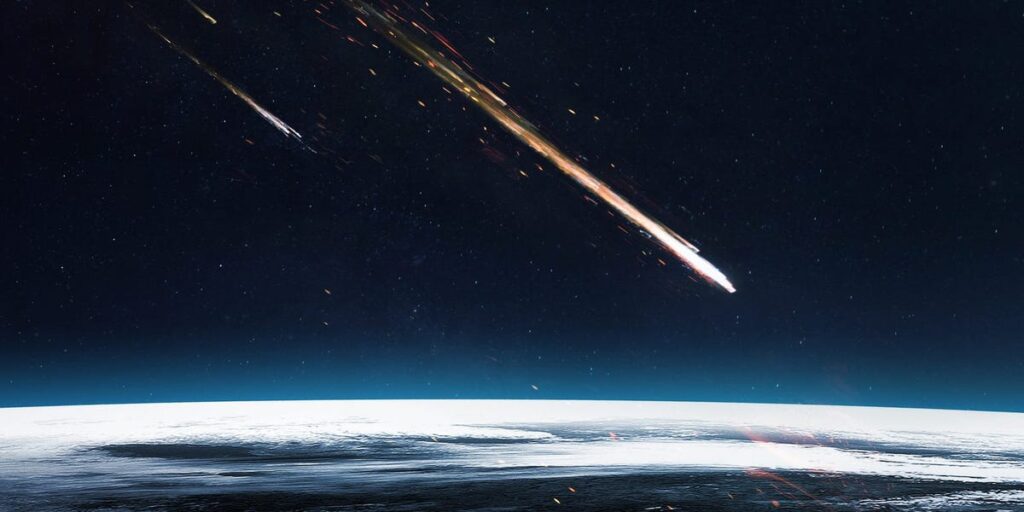- One of the exciting celestial phenomena this summer will be the double meteor shower, which will peak on July 30th.
- The two meteor showers are very different from each other, with one being known for its fireballs.
- The double meteor shower can be seen in both the Northern and Southern Hemispheres.
Two meteor showers, the Delta Southern Aquarids and the Alpha Capricornids, are scheduled to peak at roughly the same time on Tuesday evening, one of which is known for extremely bright fireballs.
Nick Moskovitz, a planetary astronomer at the Lowell Observatory in Arizona, told Business Insider that the best time to view any meteor shower, including this double shower, is between 2 a.m. and 4 a.m. local time.
While people in the Southern Hemisphere will have a more spectacular view, Moskovitz says people in the Northern Hemisphere can also enjoy the shower if they know where to look.
Where to see the double meteor shower in the U.S. this week
If you're in the US, Moskovitz recommends finding a location with a clear view of the southern horizon and as far away from light pollution as possible.
“If you look to the southern sky from the United States, you'll see meteors streaming from the Southern Hemisphere north, east and west,” Moskovitz, who has set up nearly 100 cameras across Arizona and observes hundreds of meteor showers a year, told BI.
These two meteor showers are named after the neighboring southern radiating constellations Aquarius and Capricorn.
Those in the Southern Hemisphere will be able to see the meteors overhead because the constellations line up overhead during peak viewing times, allowing the most meteors to be seen per hour, but in the Northern Hemisphere, you'll need to look south to catch the meteors streaking across the night sky.
You won't need a telescope or binoculars – the meteors move so quickly that the best way to see as many of them as possible is with the naked eye, but it does require some time and patience.
“People go outside and then five minutes later they get disappointed and go back inside. It actually takes 15 minutes for your eyes to adjust to the darkness,” Moskovitz said, adding, “You have to find a spot and wait for it to settle in.”
A double meteor shower worth seeing
On their own, the Delta Aquarids and Alpha Capricornids aren't as spectacular as larger meteor showers like the Perseids, which peak in mid-August, but the dual shower gives you a good chance of seeing two very different types of meteors on the same night.
The Southern Delta Aquarids meteor shower produces about 25 shooting stars per hour at its peak, while the Alpha Capricornids meteor shower produces about 5 shooting stars per hour. Moskovitz said the best chance to catch both is at night.
Unlike the Aquarids, which are typically fainter and smaller, the Capricornids can produce brilliant fireballs — super-bright shooting stars that people get excited about, Moskovitz said.
These two meteor showers usually peak around the end of July, but they don't usually peak on the same night – this year is an exception.
Cause of the double meteor shower
Earth regularly passes through streams of dirt, ice, and dust left behind by comets as they hurtle through the solar system. When that debris enters Earth's atmosphere, it burns up, releasing heat that we see as shooting stars, or meteors.
Moskovitz likens this to bugs gathering on a windshield: “The Earth is the windshield, and the bugs are like meteors hitting the atmosphere,” he says.
In the case of this dual meteor shower, “what's a little bit unusual here is that we happen to have two meteor showers in space that are so close together that it appears to be a dual meteor shower. It's just a coincidence,” Moskovitz said.
As far as meteor showers go, this dual event tomorrow evening is one of the many to enjoy.
“This is a good time to do it,” Moskovitz said, adding that mild summer night temperatures “make it a little more comfortable, and it's not the worst way to spend a few hours in the evening.”

